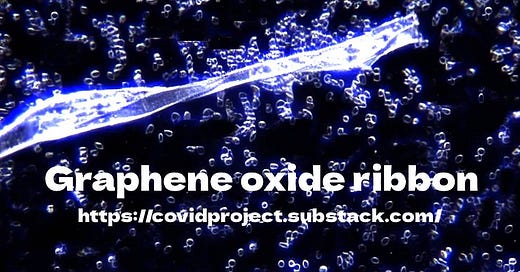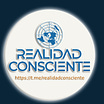Conventional medicine seems to follow a predetermined script; we cannot ignore the news that is beginning to filter out about new research that could radically change the way we understand and manipulate our health. I am increasingly finding scientific articles that, ostensibly, investigate the interactions between graphene and common dental anesthetics, such as novocaine, lidocaine, and articaine. However, what few know is that behind these studies lie much darker and more strategic interests. There is talk of advanced computational simulations and atomic-level analysis; however, all of this may be a strategy to promote the widespread implementation of a graphene-based liquid interface throughout the population. Given that more and more people are showing resistance to vaccination, graphene oxide began to be included in various vials some time ago, thus ensuring that no individual is exempt from this implantation.
We cannot rule out the possibility that what this study reveals about the prolonged effects of local anesthetics may have some truth to it. However, based on our experience and the evidence of how large corporations and governments have lied and manipulated the truth, especially regarding the presence of graphene in COVID vaccine vials, it is difficult not to think that these studies may be being used as smokescreens or as a means to cover up something much more sinister. The data from these studies, which use complex density function theory calculations and molecular dynamics simulations, appear to be just the tip of the iceberg in a much larger and encrypted scheme.
The scientific article was published in volume 366 of the Journal of Molecular Liquids, on November 15, 2022: Understanding interactions between graphene and local anesthetic molecules applied in dentistry – Towards the prolonged effects of local anesthesia1.
This scientific study investigates the interactions between graphene and three common dental anesthetics—novocaine, lidocaine, and articaine—using detailed computational simulations. The primary goal is to understand how graphene can act as a drug carrier to prolong the effect of local anesthesia. It is said that the effects of dental anesthesia are short-lived, but in my experience years ago, they lasted for hours, then that statement is incorrect. The authors employ density functional theory (DFT) calculations, DFTB calculations, and molecular dynamics (MD) simulations to analyze binding energies and noncovalent interactions in different environments. Articaine was found to exhibit the strongest binding to graphene, suggesting its potential for a (supposedly) longer anesthetic effect when used with this nanomaterial. The study underscores the importance of atomistic simulations for the design of improved drug delivery systems.
The interaction between graphene and anesthetic molecules can prolong the effects of local dental anesthesia through a controlled-release mechanism. According to the study, this process works as follows:
Slow release of active components: The main idea is to use graphene as a drug delivery agent. By loading nanomaterials such as graphene with active components, the goal is to release the active component in a slow and controlled manner, thereby extending the anesthetic effect.
Adsorption by nanomaterials: Graphene, a two-dimensional material with a vast surface area of 2630 m²g⁻¹, is a promising candidate for developing drug delivery agents due to its high adsorption potential. The release dynamics of the active components are primarily dictated by the binding energy between the adsorbent (graphene) and the adsorbate (anesthetic molecule).
Computational Investigation: The study addressed the interactions between graphene and three common dental anesthetics: novocaine (NOV), lidocaine (LID), and articaine (ART). Atomistic calculations, including density functional theory (DFT), the density functional theory tight binding method (DFTB), and molecular dynamics (MD) simulations, were used to understand in detail how these molecules interact with graphene. This allowed for the identification and quantification of noncovalent interactions and binding energies.
Articaine is key: The results of the study indicated that articaine (ART) exhibited the strongest binding to graphene among the anesthetics studied. This suggests that the most prominent prolongation of the anesthetic effect through graphene adsorption could potentially be achieved with articaine. The structural specificity of articaine, in particular the existence of a thiophene ring, is considered a crucial advantage for a prolonged anesthetic effect, as it improves diffusion through the lipid-rich nerve membrane to reach the target receptors.
Furthermore, the same study cites potential adverse effects and toxicity when considering the practical applications of graphene as a drug carrier. The study acknowledges that, from a practical application perspective, one must be aware of graphene's limitations, such as its hydrophobicity and potential toxicity. Furthermore, it mentions that certain studies have indicated the toxic effects of various graphene-based nanoparticles. In fact, one of the publications cited in this study is titled "Cytotoxicity assessment of graphene-based nanomaterials on human dental follicle stem cells," underscoring the importance of cytotoxicity assessment in this field.
Graphene oxide can never be considered completely biocompatible, as its toxicity is closely linked to exposure to microwaves and radio frequencies. Since we are constantly surrounded by antennas, routers, and other emitting devices, its presence will continue to pose a potential health risk.
The False Dissidence has deployed a systematic denial campaign since 2021, attempting to divert attention from the compelling evidence pointing to the presence of graphene in COVID-19 vaccine vials. While independent studies and high-resolution microscope analysis have unequivocally demonstrated the existence of graphene particles, these individuals insist that what they observed is nothing more than hydrogel, distorting reality to protect their true employers and maintain the official narrative. The role that hydrogel plays in this graphene story has been amply demonstrated in subsequent articles. Information manipulation and selective censorship have been their modus operandi, generating confusion and distrust among the population.
It is evident that this denial strategy is not accidental, but part of a larger plan to cover up the hidden interests behind the use of hydrogel and graphene in the vials. The evidence accumulated in various independent studies reveals a crucial role for hydrogel as a vehicle and adjuvant in the implantation process of graphene nanoparticles, suggesting a deliberate attempt to integrate these technologies into the population without their informed consent. It is clear that these individuals, far from being simple dissidents, are working for a hidden agenda that seeks to covertly control and modify our biology. I dedicate this article to the False Dissidence, which since 2021 has been denying the evidence and diverting attention, in complicity with those truly behind this dark project.





